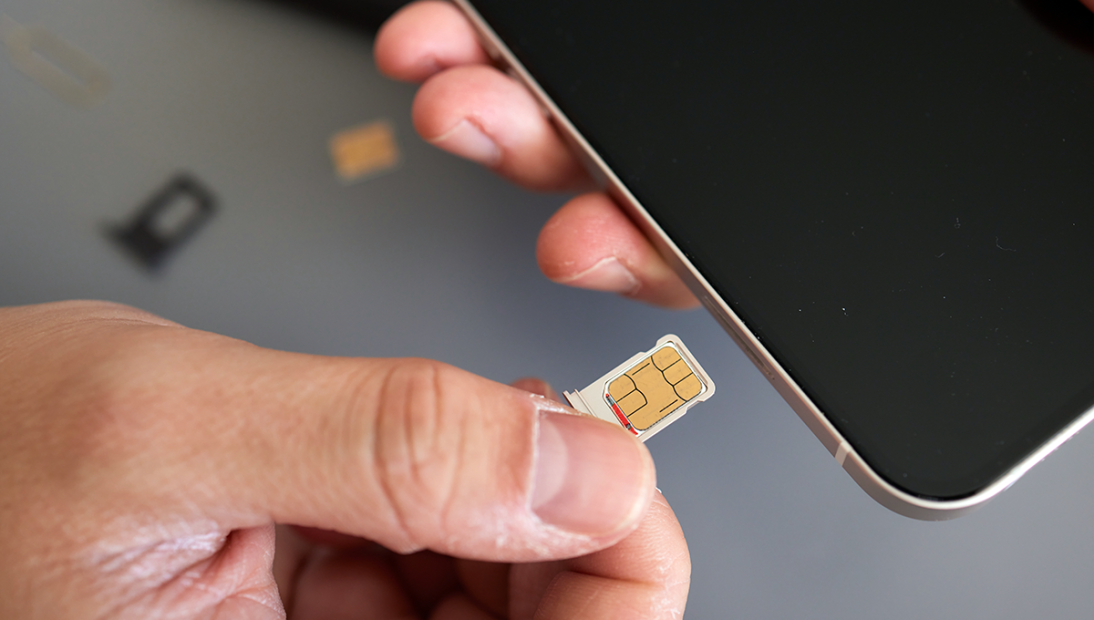By now, most of us know to ignore emails from a prince or princess from a foreign country. You might even know how to spot a suspicious text message. But have you heard of a SIM swap?
SIM swap scams—also known as SIM hijacking—are on the rise. “It’s extra challenging because so much is out of our control,” said Chris Blackmore, TD Senior Manager of Customer Education.
But that doesn’t mean you’re powerless. Here’s what you need to know to protect yourself from SIM swap scams.
What is a SIM swap?
In a SIM swap scam, a fraudster tricks your mobile carrier into transferring your phone number to a SIM card they control without your knowledge. Once they do, all your calls, texts, and data are redirected to their device. From there, scammers can initiate “Forgot Password” requests on your accounts—like your email or bank—since the scammers now receive your SMS-based two-factor authentication codes.
“Sometimes scammer have insiders at telecom companies,” Chris explained. More often, they impersonate you using stolen personal information.
Protect yourself from SIM swaps
Here’s how to prevent and identify SIM swaps:
Set up a PIN or passcode with your mobile carrier.
Most mobile carriers allow you to set up a unique PIN or password that must be provided before making account changes. This is one of the simplest ways to stop unauthorized access.
Don’t share sensitive information over the phone, text, or email.
If someone contacts you claiming to be a representative of your mobile carrier and asks for account details, do not give out any information. Instead, call your carrier directly to verify the call.
Attackers might also use phishing tactics, such as SMISHING, to steal information to impersonate you. Remember: legitimate organizations will never ask for sensitive information—like your Social Security number, passwords, or account details—over text, phone, or email.
Watch for sudden loss of service.
An unexpected loss of service is a telltale sign of a SIM swap. If your phone suddenly shows “No Service” and you’re not in a dead zone, it could be a sign your number has been stolen. Contact your mobile carrier right away.
The same goes for your personal accounts. If you find yourself suddenly locked out of banking, email, or social media accounts—or if you receive password reset notifications that you didn’t initiate—investigate.
Keep your phone updated.
Software updates do more than just add new features—they often include critical security enhancements designed to protect your personal data.
“Update, update, update, as much as possible,” Chris said. “Tech companies rely on those updates to improve security.”
Turn on biometric security measures.
Keep your accounts secure by activating biometric authentication, such as Face or Touch ID. This is especially helpful for sensitive accounts such as bank and email.
Download an authentication app.
During a SIM swap, SMS-based two-factor authentication codes are intercepted by attackers. Authentication apps provide extra security by generating codes locally on your device.
Learn more about two-factor authentication and available apps in this article from the Federal Trade Commission.
Some of these changes might feel inconvenient, but it’s worth it to protect yourself.
“You don’t want to look back and say I wish I had,” said Lindsey Federer, TD Fraud Management Strategist. “You want to be able to say: I’m glad I did.”
What to do if you’re a victim of a SIM swap
Here’s what to do if you’ve been targeted by a SIM swap attack:
Contact your mobile carrier.
Call them immediately so you can regain control of your number and report the fraud. You may have to borrow a phone to do this.
Change your passwords.
Start with your most important accounts: banking, email, and social media.
Alert your bank.
Let your bank know you’ve been a victim of fraud. Monitor your accounts closely and lock them if needed.'
Report the fraud.
File a complaint with the FTC and your local police. The more cases are reported, the better authorities can track and prevent them.
Action checklist for SIM card swap victims:
- Contact your mobile carrier
- Change critical passwords
- Alert your bank
- Monitor financial accounts and credit reports for unusual activity
- Report the fraud to the FTC and local authorities
Stay informed. Stay safe.
It can feel daunting trying to protect yourself from mobile scams, but you’re not alone.
“At TD, we take fraud very seriously. Our goal is to protect our customers. Education is a huge part of that,” Chris said.
“When it comes to fraud, knowledge is your armor,” Lindsey added. “The more you know, the more tools you have to protect yourself.”
Visit TD.Com/FraudPrevention to learn more about protecting yourself and your loved ones from fraud and scams.
For more on personal finance topics
If you have more questions about personal finance topics, visit the Learning Center on TD Bank's website. You can find more TD Bank services at TD.com.
We hope you found this helpful. This article is for informational purposes only and is based on information available as of June 2025 and is subject to change. This content is not intended to be used or acted upon with respect to any client's specific circumstances. For specific advice about your unique circumstances, consider talking with your qualified professionals.
